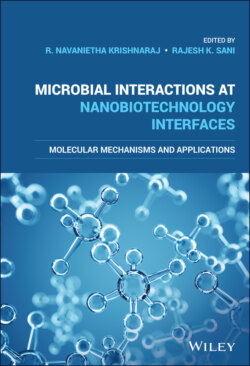Читать книгу Microbial Interactions at Nanobiotechnology Interfaces - Группа авторов - Страница 49
1.10.2 Shape
ОглавлениеNext, to size, shape is also an important factor that affects the structural behavior and antimicrobial activity of the NMs. NMs of different shapes have shown to cause varying degrees of bacterial cell damage, mechanism of action, and antibacterial property (Cha et al., 2015). Hong et al. (2016) studied the antimicrobial property of sphere‐, wire‐, and cube‐shaped silver NPs of the same diameter. Notably, the nanoparticle with cubic shape exhibited the highest antimicrobial effect in comparison to other shapes. This was attributed to the specific facet reactivity and surface area of the cube‐shaped NPs (Hong et al., 2016). Another study was done to compare the enzyme inhibition and antimicrobial effects of the sphere‐, plate‐, and pyramid‐shaped nano‐ZnO particles. It was reported that the particles of pyramid shape showed a better β‐galactosidase enzyme inhibition and greater antimicrobial property. The system was a reversible inhibition system and worked by obstructing the enzyme similar to natural inhibitors unlike by the degradation of enzymes as reported earlier (Cha et al., 2015). In another study involving Y2O3 NPs, the particles of prismatic shape showed better antibacterial activity against Pseudomonas desmolyticum and S. aureus. The antimicrobial activity was due to the direct interaction of prismatic‐shaped particles with cell membrane followed by the membrane damage and bacterial kill (Prasannakumar et al., 2015).
